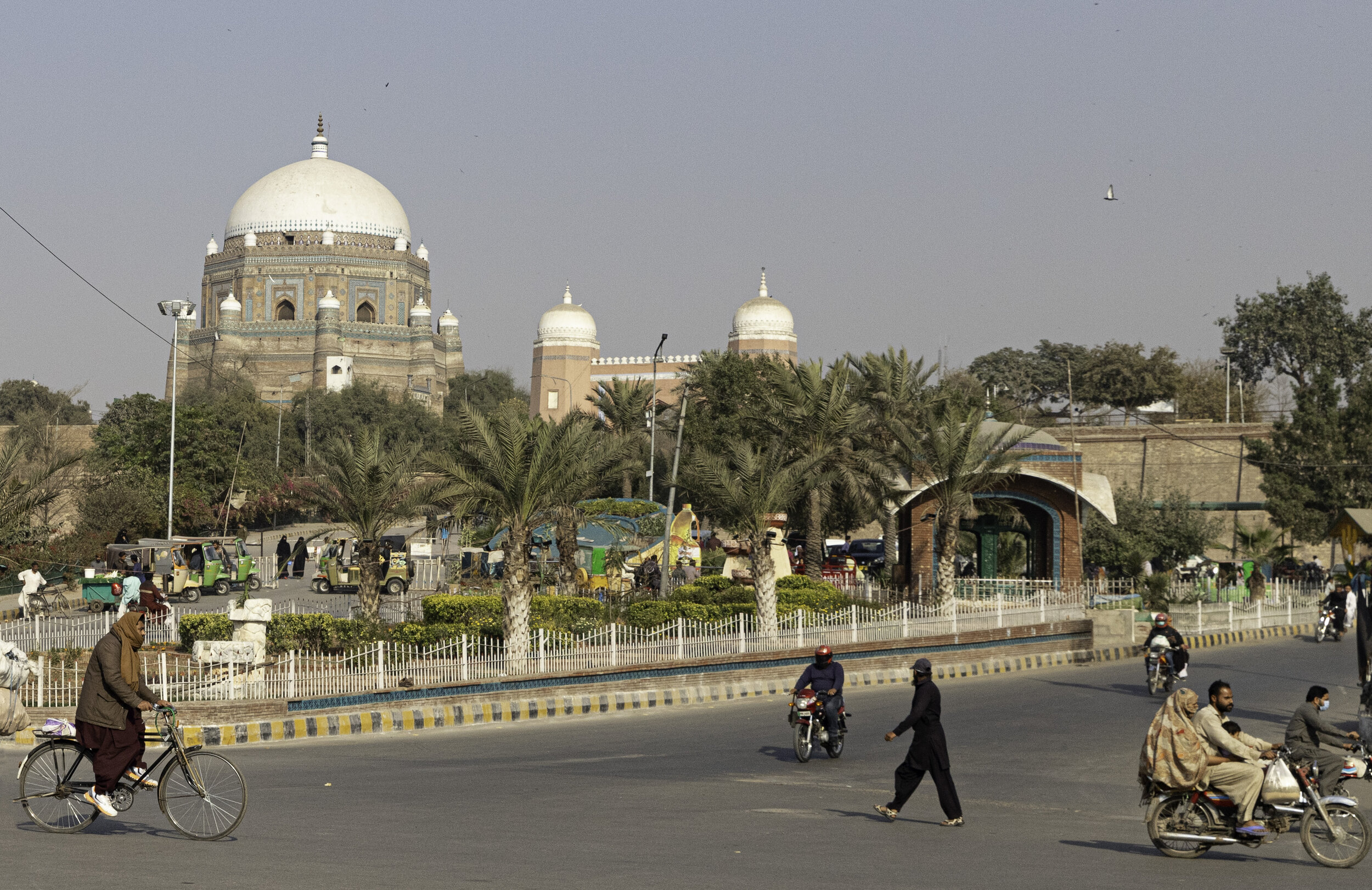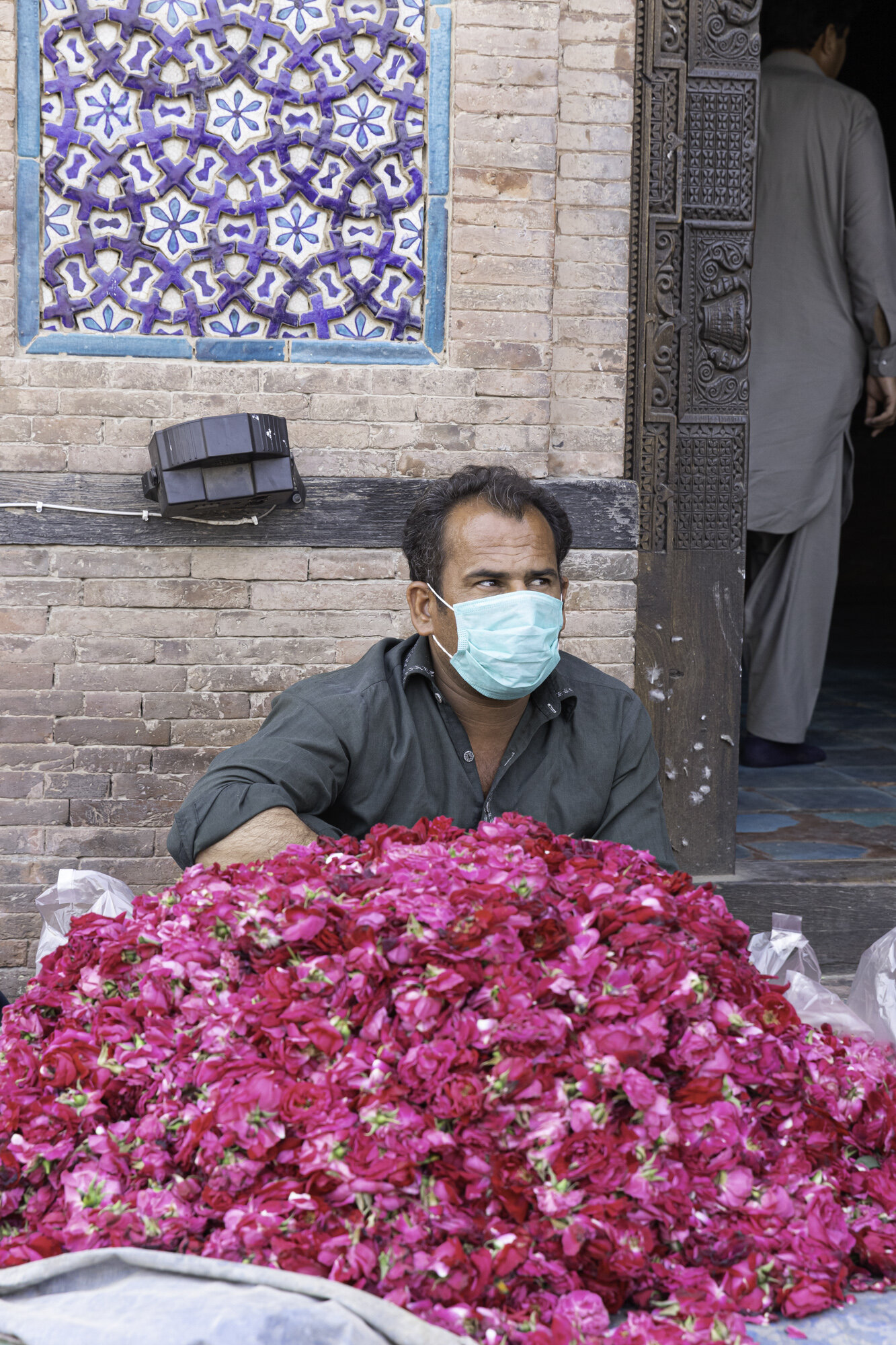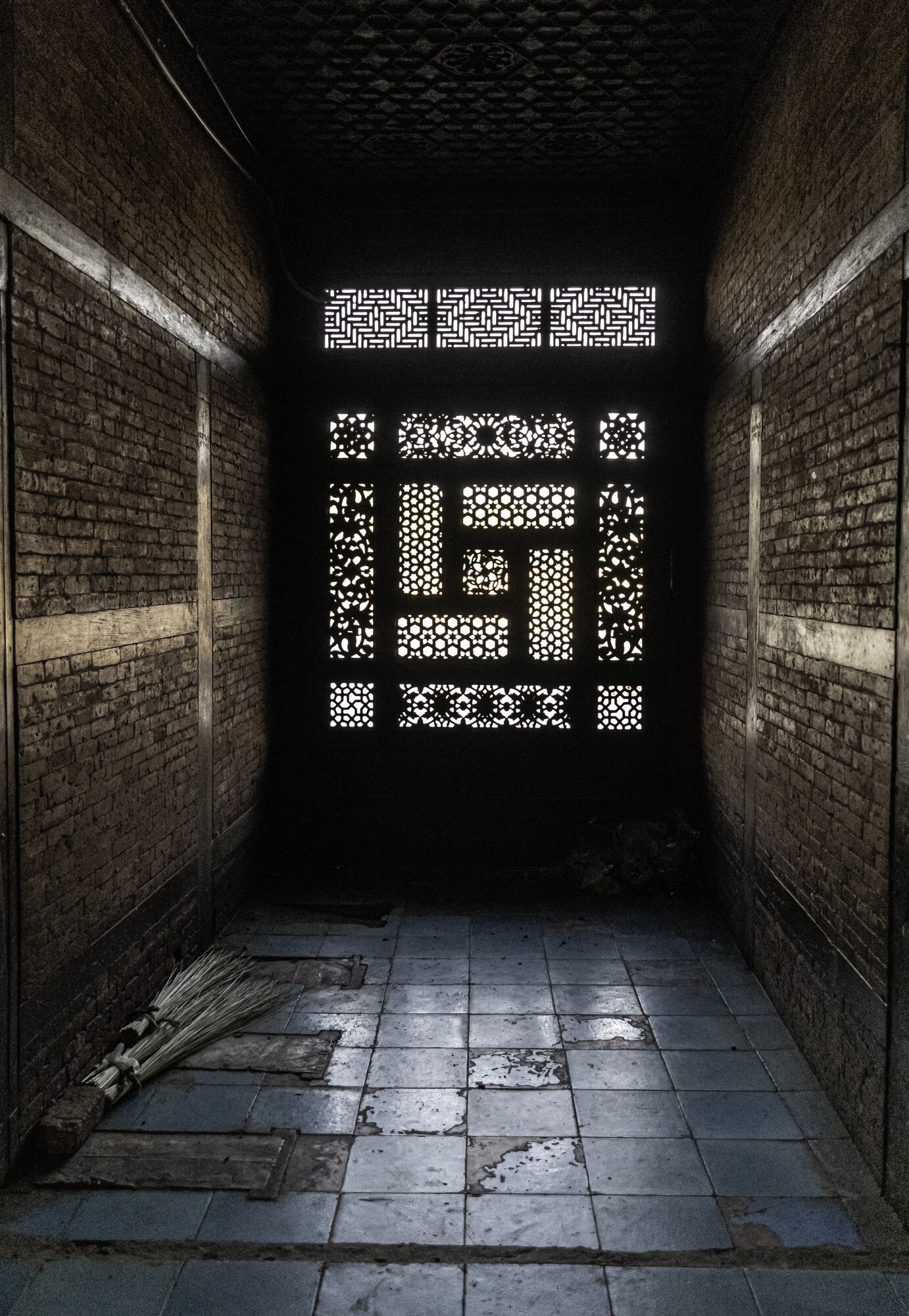Postcard from Shah Rukn-e-Alam (Pillar of the World) Shrine, Multan
As I rounded the corner from the bazaar the tomb of Shah Rukn-e-Alam came into view on top of the mound of an old fort. I can see why it is listed as a possible UNESCO World Heritage Site. It is an imposing three-tiered structure, surrounded by a large courtyard. The first section is an octagon with round towers at each corner, this is topped by another octagon with white tomes, topped by a 15-meter diameter white dome. The building was thoughtfully restored in the 1970’s and uses a mix of red bricks, traditional Multani glazed tiles, and shisham wood.
The tomb was built between 1320 and 1324 by Ghiyath al-Din Tughluq and was thought to have been built for his family. However, the tomb was gifted to the family of Rukn-e-Alam and his remains were moved to the shrine in 1330.
During the Tughluq period Islam spread through the region by large numbers of Sufi teachers. By the early 12th century Multan was regarded as a centre of Sufi learning. Shah Rukn-e-Alam (Pillar of the World) was a Sufi saint. He came from a long line of saints, his grandfather was Bahauddin Zakariya, I will write another blog about Bahauddin Zakariya and his shrine that is situated very close to this one. The Pakistan Foreign Minister, Shah Mehmood Qureshi, is the current custodian of the tomb.
Shah Rukn-e-Alam is still revered today and annually over 100,000 pilgrims from all over South Asia visit the shrine. I can now add myself to that number.
Shah Rukn-e-Alam Shrine seen from the bazaar
Gateway into the shrine
Traditional Multani blue and white glazed tiles
Rose petals for sale outside to scatter over the tomb
Tomb surrounded by 72 graves of his family
Decorative shisham wood panel
Lighting candles outside the shrine
View of the Shrine from the top of the Multan Museum

















